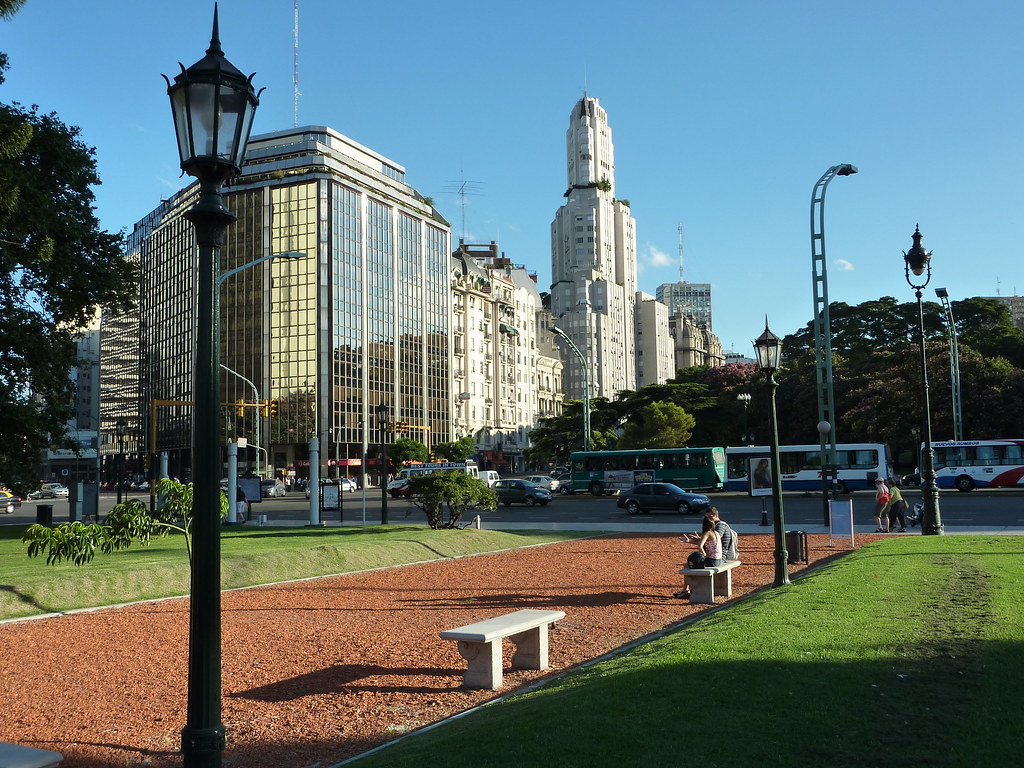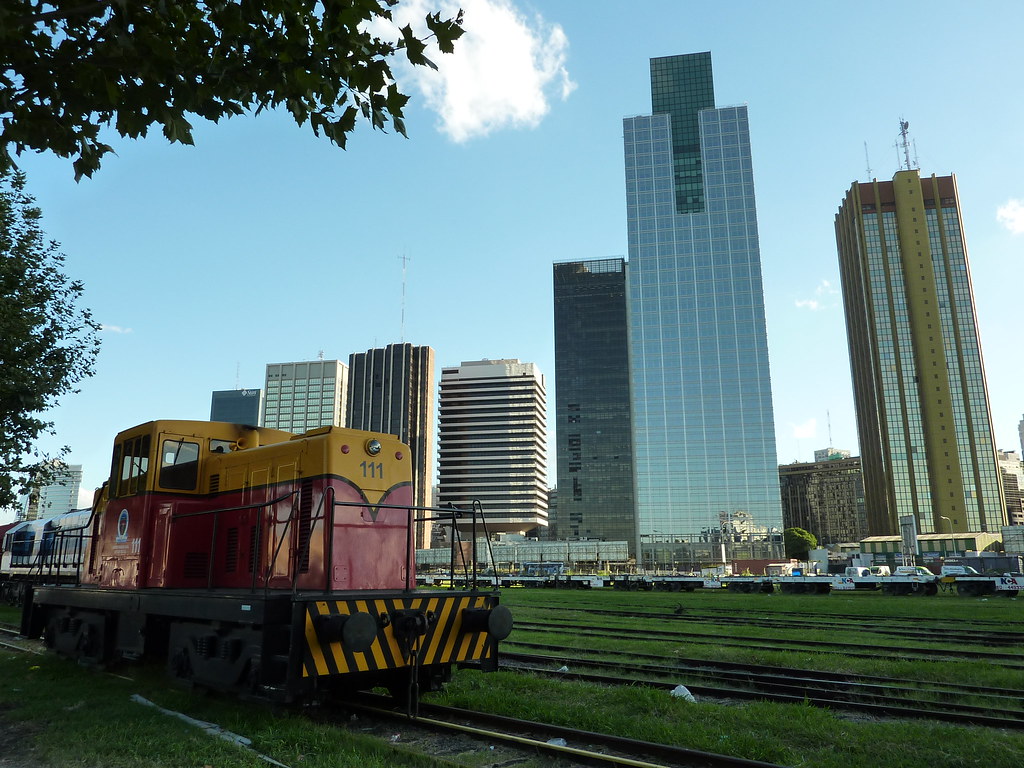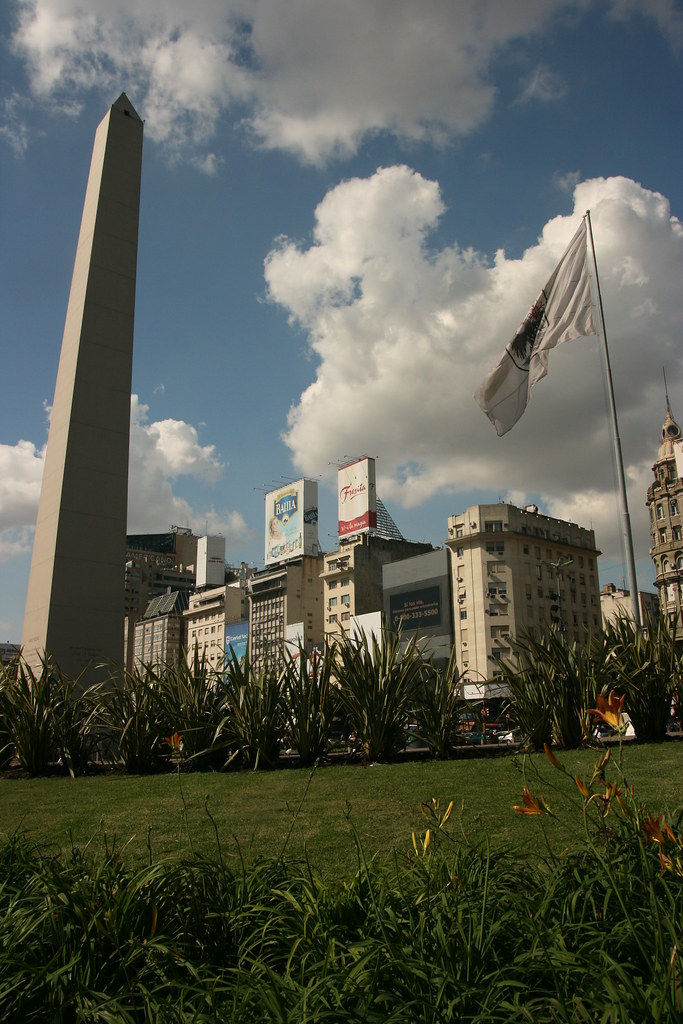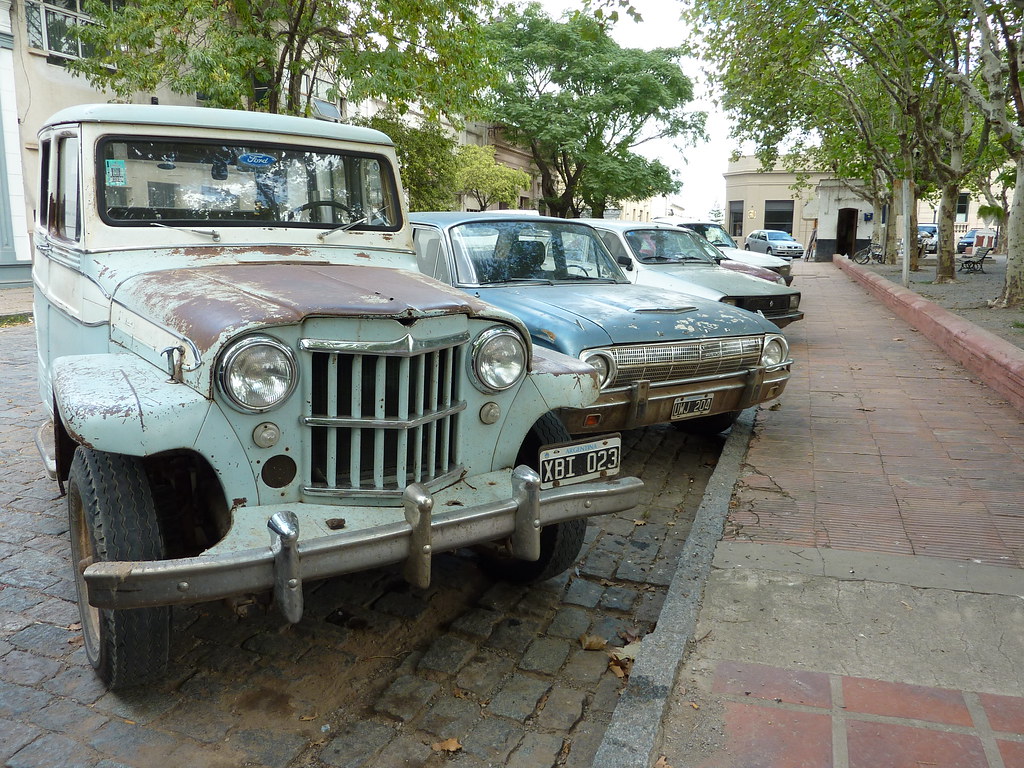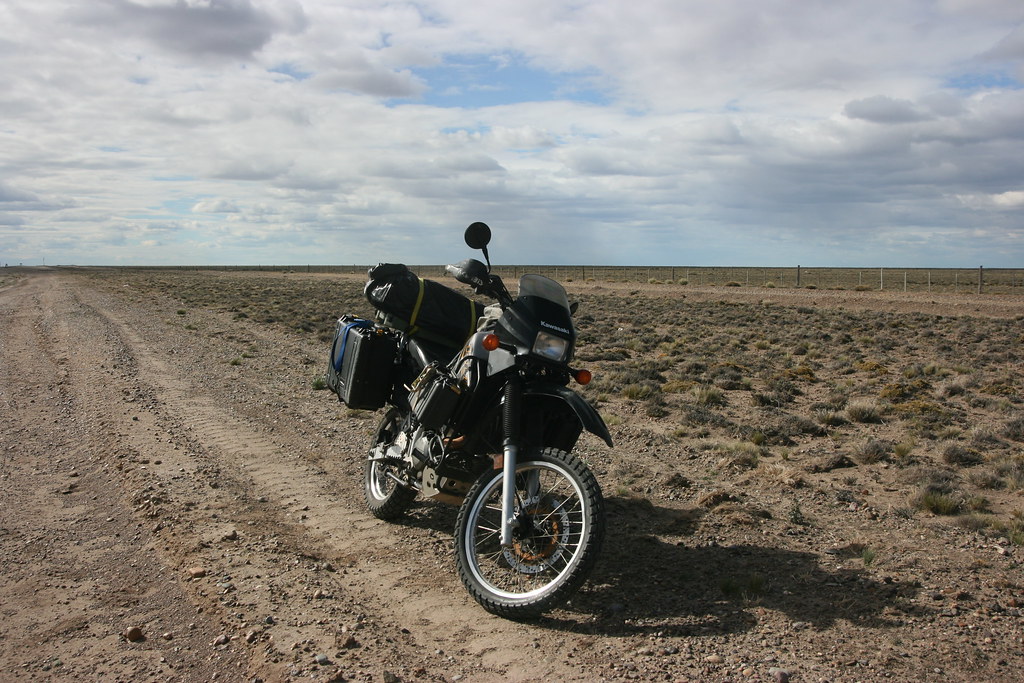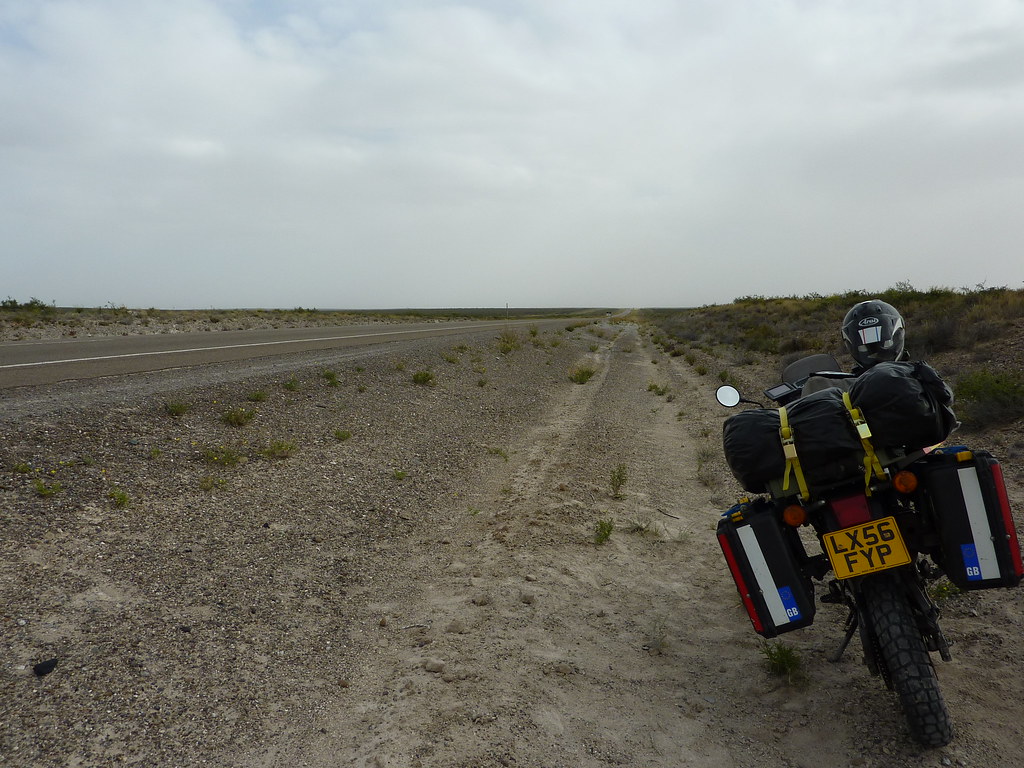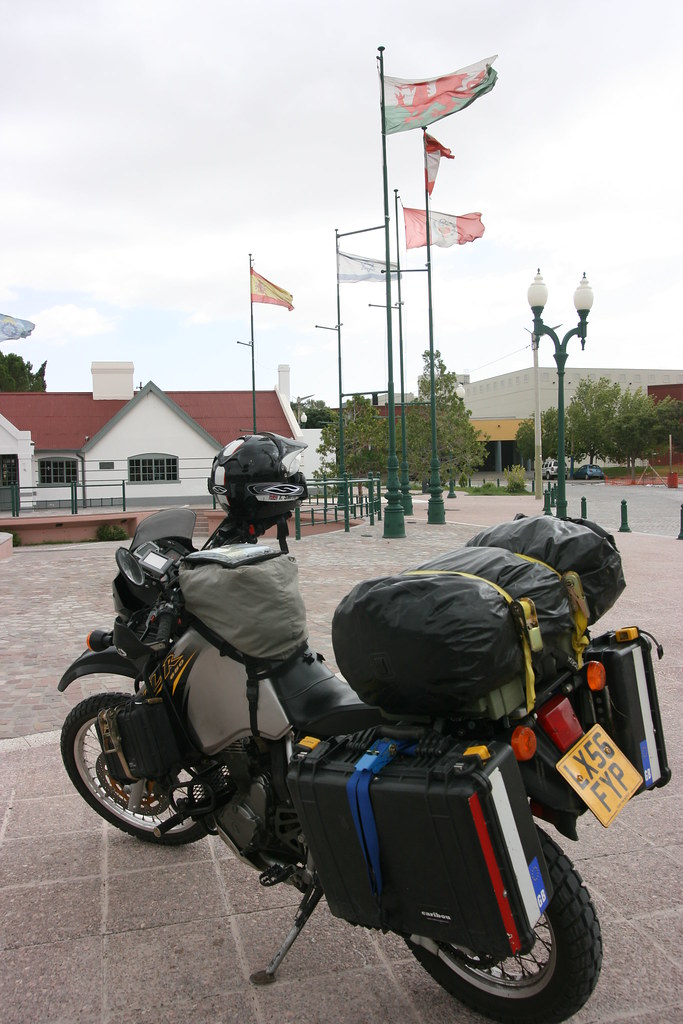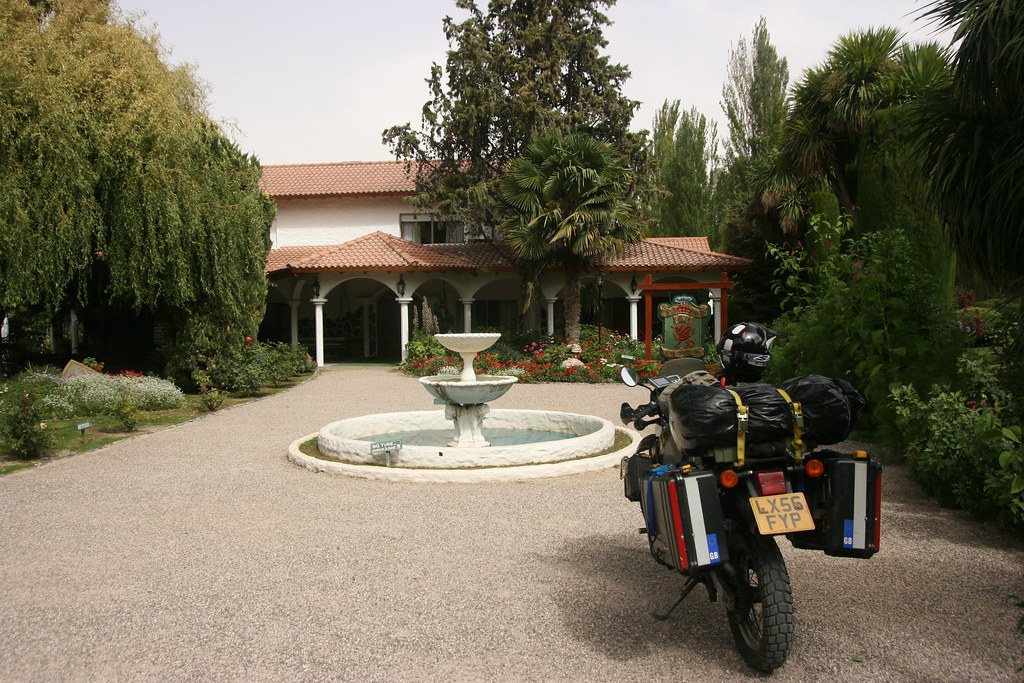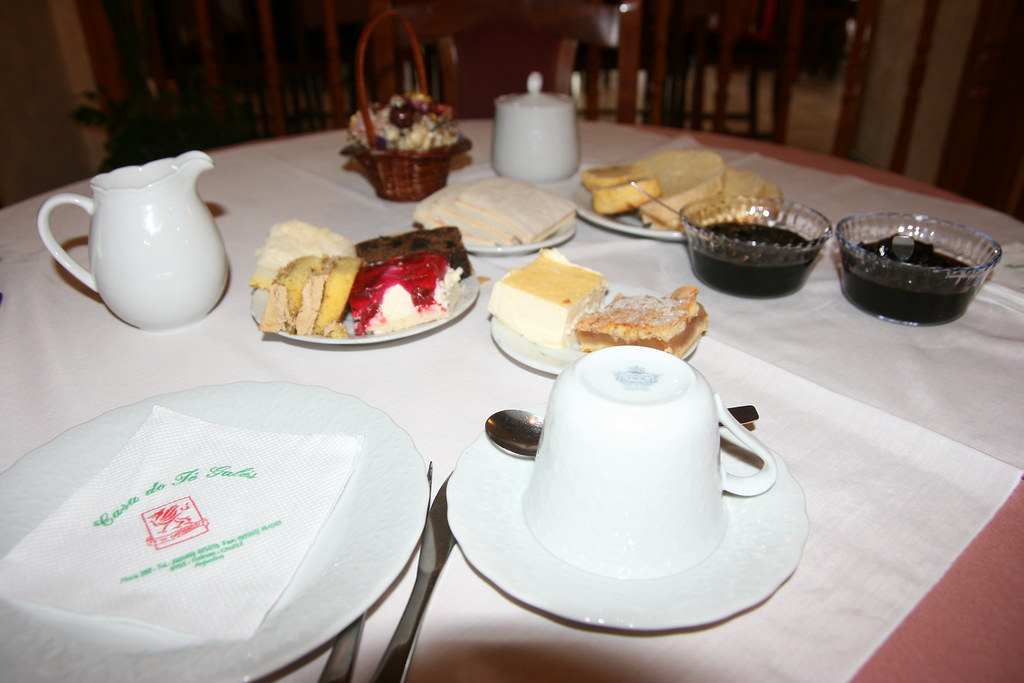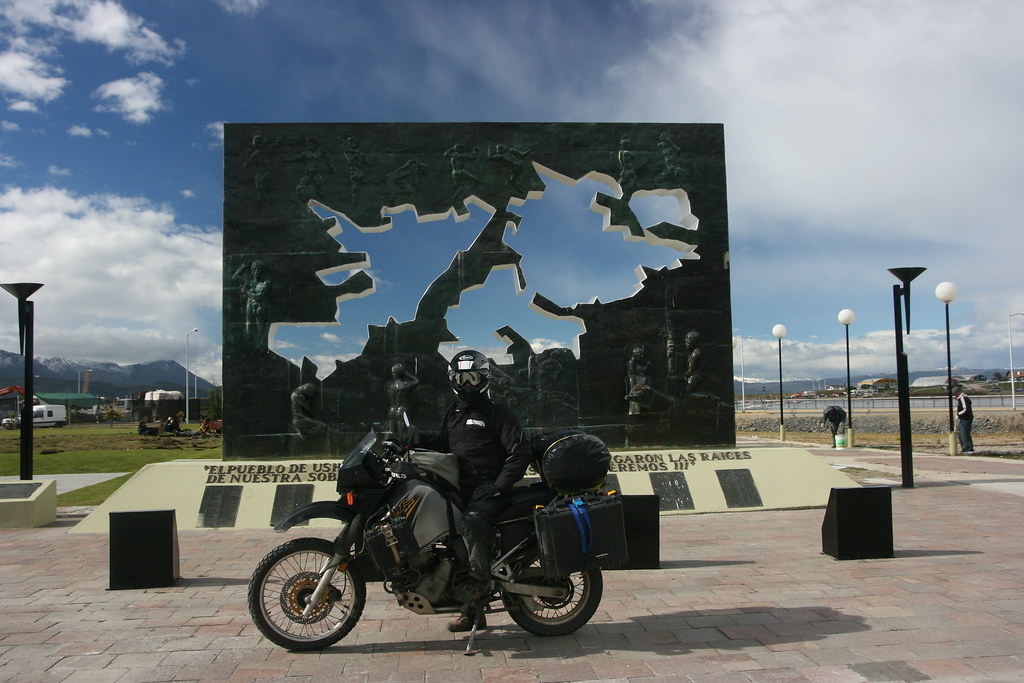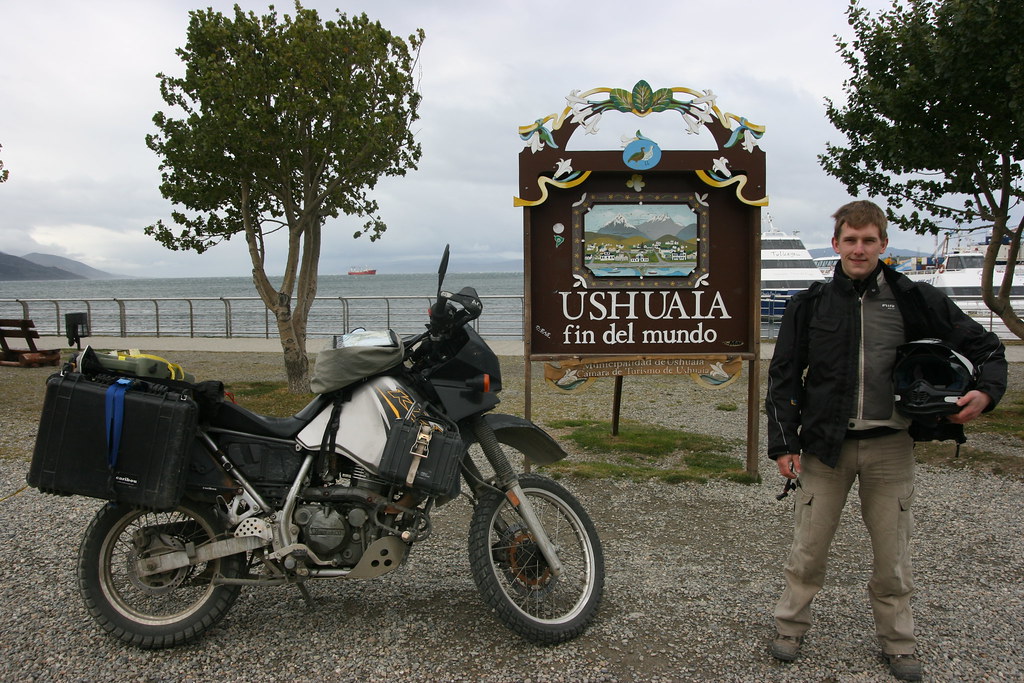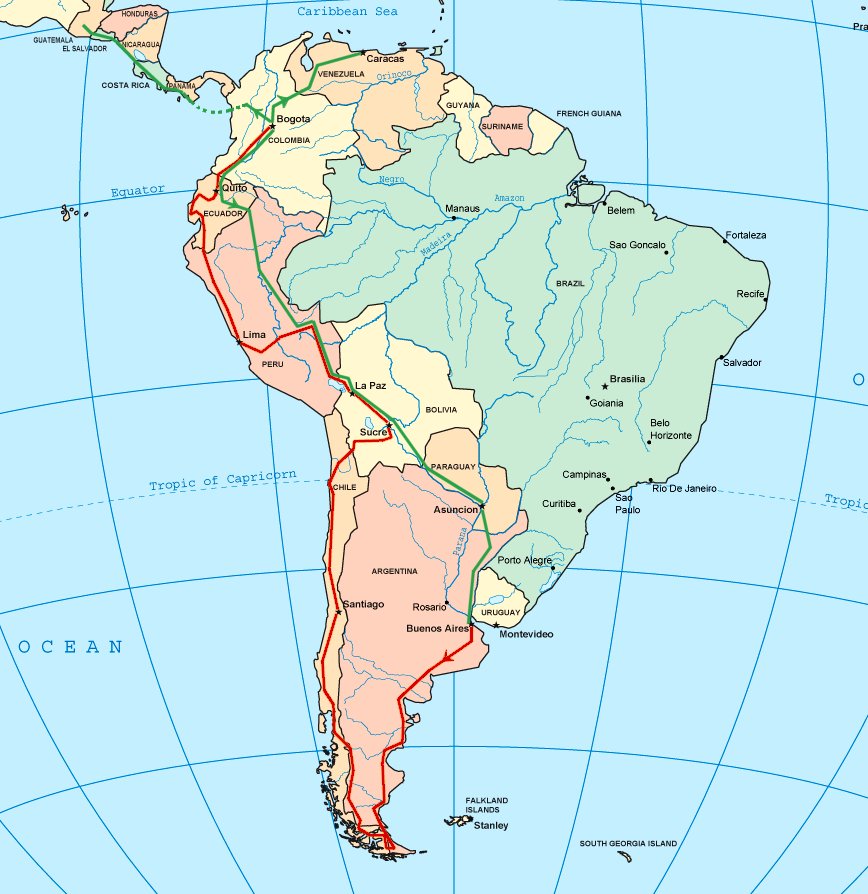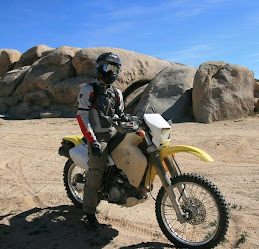For the past week I have been criss-crossing between Argentina and Chile, mainly riding on Ruta 40 which tracks the Andes north. Far from the dull monotony of Ruta 3 (the long straight paved road that carried me south down the Atlantic coast to Ushuaia), Ruta 40 is infamous among bikers. A mix of smooth tarmac and rough (sometimes very rough) gravel road, it is synonymous with gusting winds, challenging riding, and spectacular scenery.
After leaving Tierra del Fuego the first breathtaking sight that greeted me was the towering granite spires of Torres del Paine National Park, Chile. Surrounded by crystal blue mountain lakes the national park has some of the best trekking in the world.
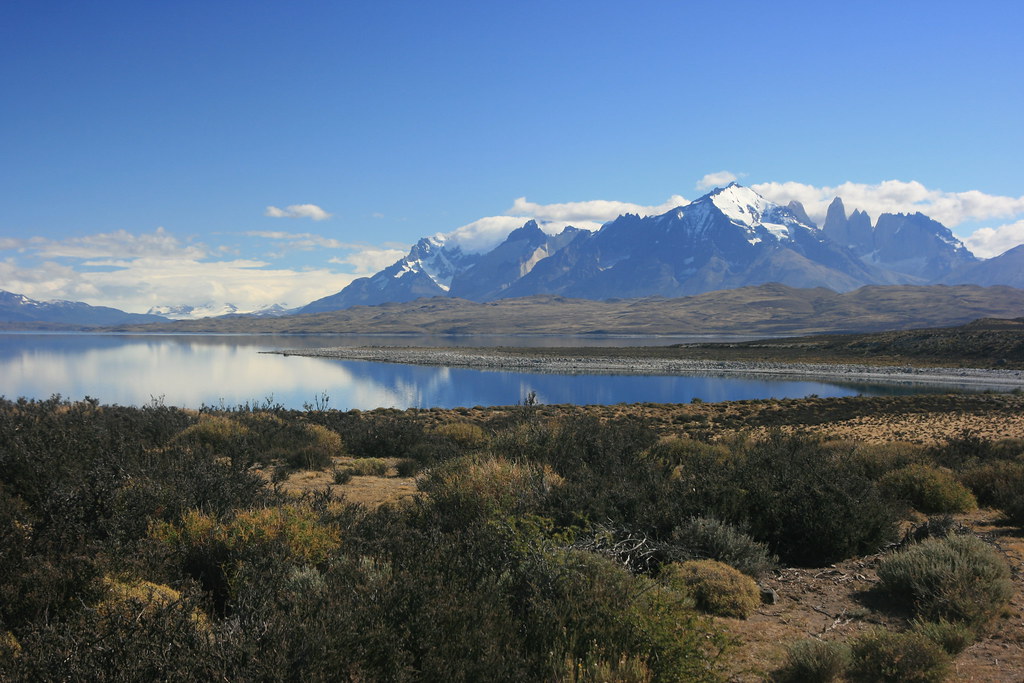
Loathed to miss it, I consulted my guidebook and looked for a suitably challenging but quick trek that I could do before sunset. The most appropriate seemed to be the "Las Torres" route - a 9km hike up 1500m to see the granite towers. The only problem was that my guidebook told me to allow 9 hours to get up there and back - I had two and a half before the sun went down. Looking at the spires, which appeared so close, I reckoned I could do it quicker than that. Surely it´ll only take half an hour to get to the top?
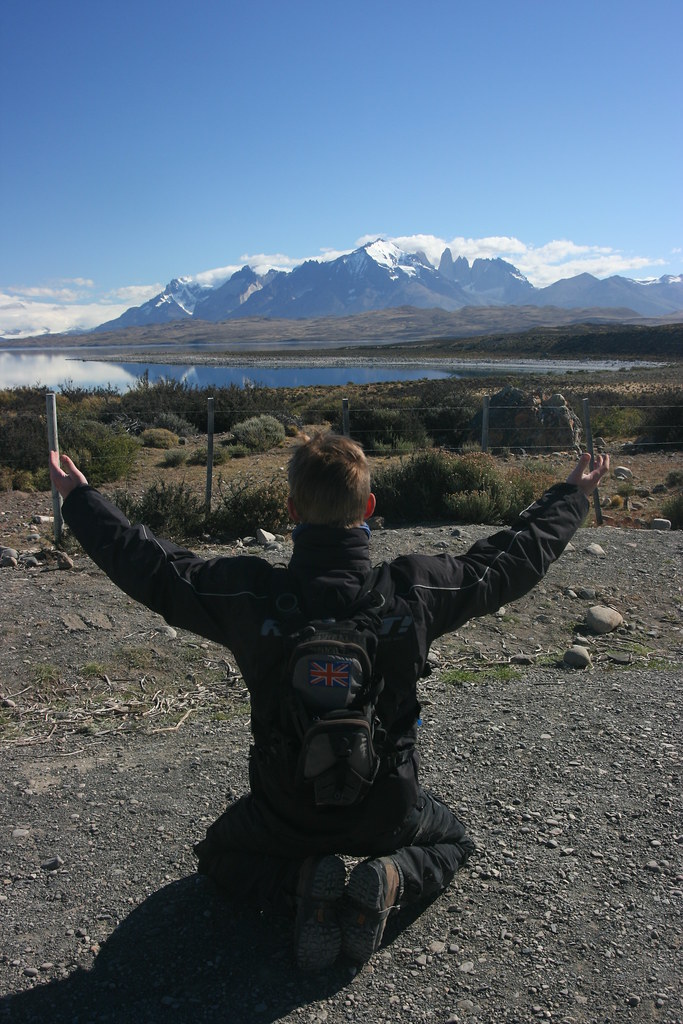
Setting off at a run, I stormed past the groups of English speaking tourists (all of whom were carrying heavy camping gear) and two hours later I heaved myself to the summit, panting like Boddingtons and completely exhausted. The view that greeted me was a cold barren lake and "glacier". Not quite the sunlit panorama I had imagined, but not bad. It took me another two and a half hours to stumble back down under a starlit sky.
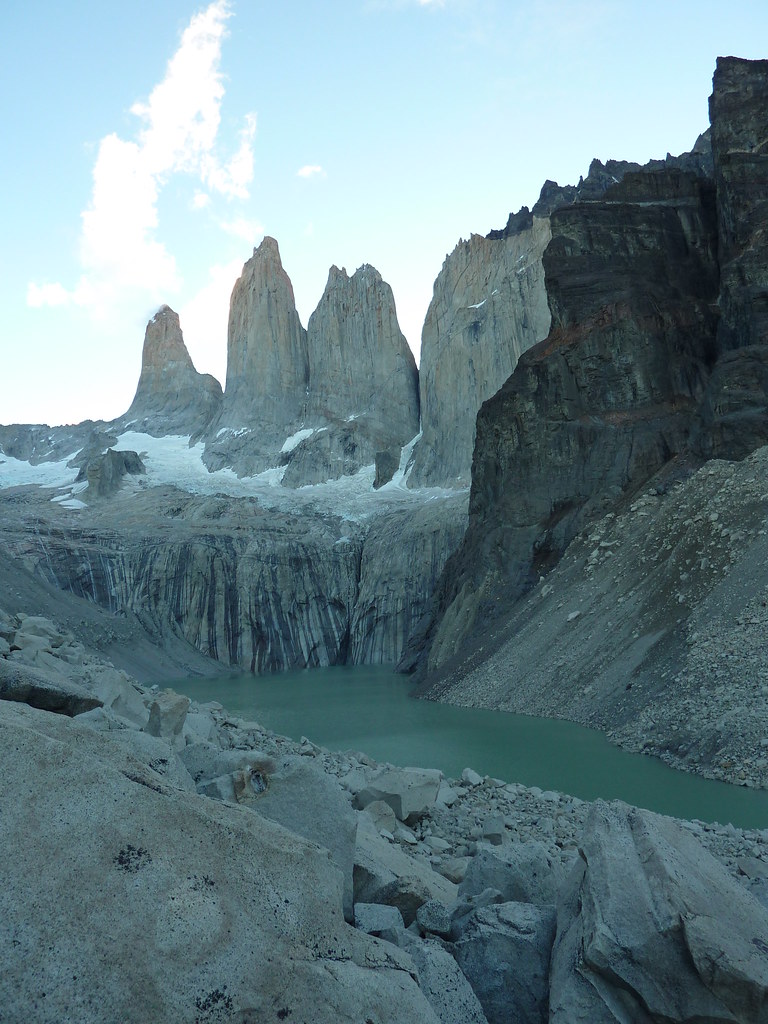
Crossing back into Argentina I soon found myself in El Calafate - a pleasant tourist town that exists mainly to cater for the hoardes of tourists that visit the Perrito Moreno glacier every year. I cant imagine taking a tourist bus to get to the glacier though. The 50 miles of newly paved road are some of the best I have ridden. With tight hairpins, swooping corners and the spectacular vista of Lago Argentina, the road is up there with Highway 1 in California.

The glacier itself was nothing short of captivating. I have seen several so-called glaciers on the tops of mountains, but they often resemble little more than sheets of dirty ice. In contrast, the Perrito Moreno glacier is far more in keeping with the term, with shards of ice standing sixty metres tall cutting a path through the mountains. It reminded me of Superman´s ice palace and I watched it for over an hour, listening to the cracking ice like distant gunfire and watching the occasional piece crumble off into the lake below. Without a doubt, one of the best sights I have seen.
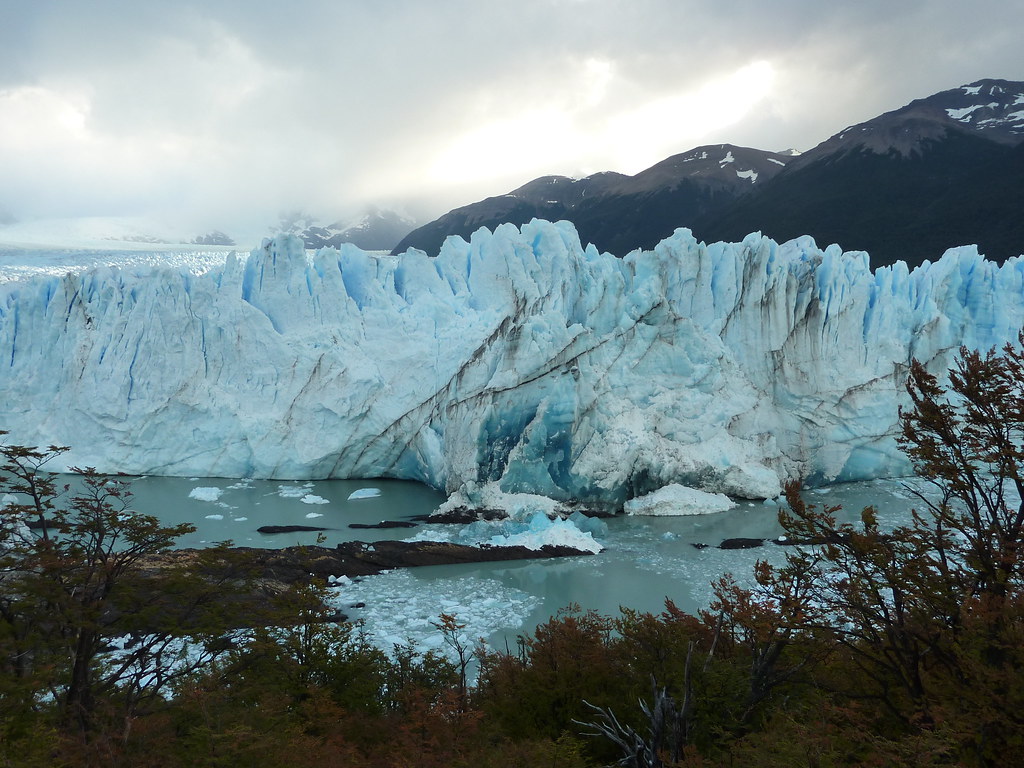
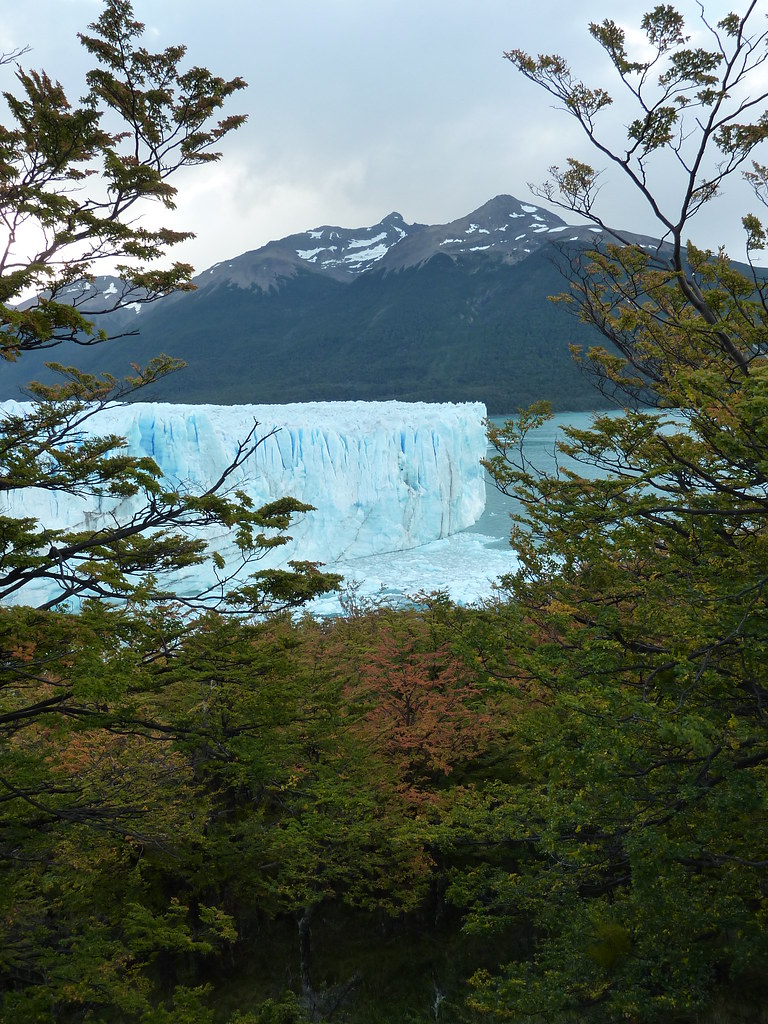
But following a few days of fairly touristy sightseeing it was time to get back on the road and begin the difficult stretch of Ruta 40 from Tres Lagos to Los Antiguos across Patagonia - 400 miles of rough gravel.
Normally, gravel is one of my favourite off-road surfaces - reasonably predictable and fun for sliding the bike around. But what I wasn´t expecting was the wind, which has a huge impact on the bike´s speed and handling. Normally I cruise at about 50mph off road, but with the wind behind me I was comfortably doing 60. For most of the time though the wind wasn´t behind and I was either riding into it (at barely 40mph), or it was coming at me from the side. The side winds are the worst. They catch the bike´s panniers and blow you off course. On tarmac you can correct the wobbles, but on gravel where there are deep rutts only a foot wide, it is much more difficult. On one stretch I cruised around a corner in what I thought was a sheltered nook only to be blasted with a hefty gust from the side. The wind was so strong it blew me out of the central rutt I was riding in and onto the loose gravel. After fifty metres of wild fishtailing I had just about brought the bike under control, now in the righthand rutt of the road. But as I was pulling up another gust hit me, blowing me completely off the road and down the steep bank on the side. Fortunately, I was only doing about 10mph so the impact was light and there was no damage. But it took me over half an hour to drag the bike upright again in the dusty sand with my gear blowing all over the place. Put that down as drop one of the South American tour.


Owing to the drop and poor state of the road, I didn´t make it to Los Antiguos that night and instead camped out in the blustery cold of the Patagonian plains. Even with all my gear on and a sleeping bag, it was still bloody freezing and I woke up with a cold. Bugger.
The following day I finally hit the tarmac again and road for a relaxing hour or two on the smooth surface, taking in the scenery around the sealike shore of South America´s second biggest lake - known as Lago Buenos Aires if you´re in Argentina and Lago General Carrera if you´re in Chile.

After stopping for a delicious salmon lunch I crossed the border and decided to continue around the lake on the rough stuff again. My guidebook promised me some of the best scenery in Southern Chile, and I wasn´t disappointed. Mystical canyonlands and lakeside stretches with a road that clung impossibly to the sides of the steep mountains.

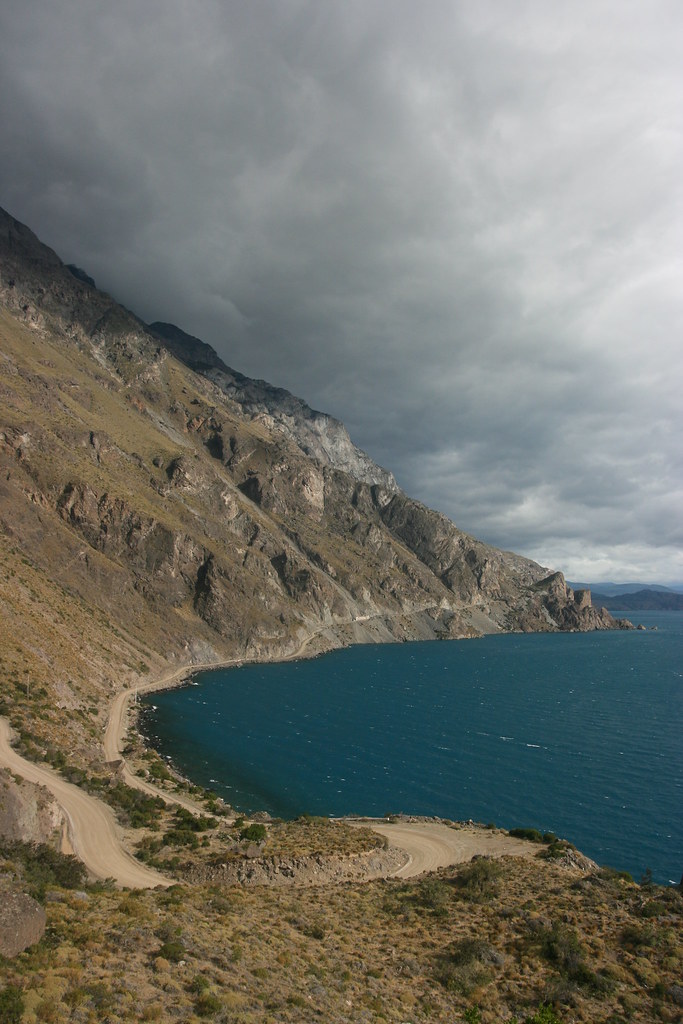
My guidebook also promised me one of the best climates in southern Chile with 300 days of sunshine a year. But being British, I brought the bad weather with me. Not only was it overcast, but by the early evening it was raining too. Loathed to camp for a fourth chilly night in a row, I sort alternative accommodation. Hotels and B&Bs were pretty sparse in the area, as the relatively new gravel road had only just opened the area to tourism. Instead, I found myself in the tiny hamlet of Bahia Murta with little sign of life anywhere. After knocking on a few doors I eventually managed to find myself a cabana for the night - a log cabin if I´m being generous, a wooden shack if not.
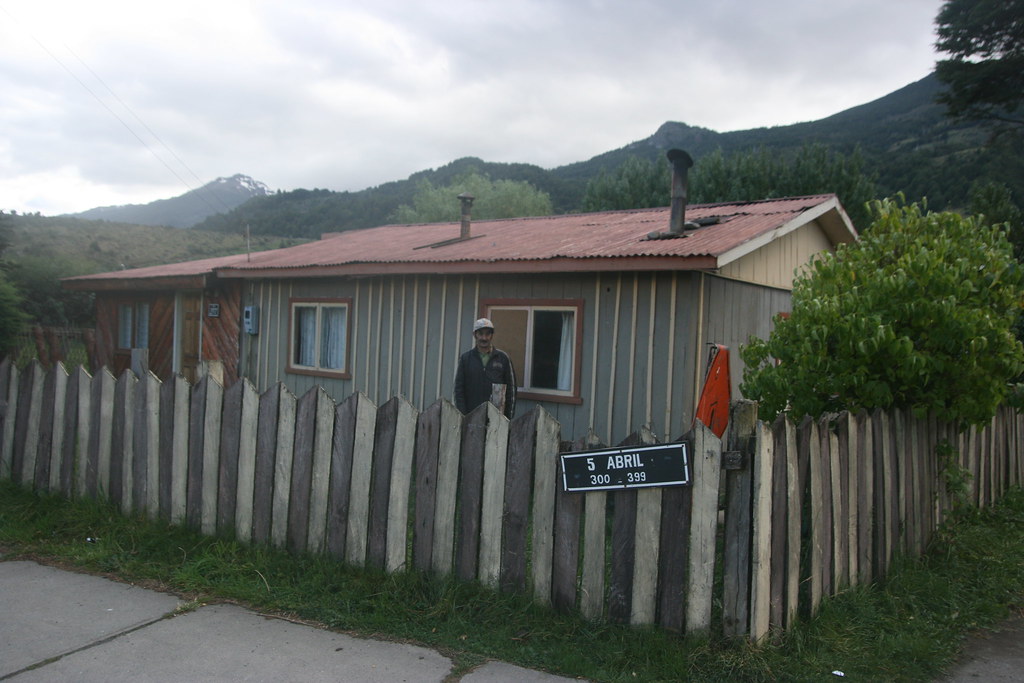
The cabana was basic to say the least. No central heating, no warm water, and obvious gaps in the woodwork and windows, which let the wind in. But there was a roof over my head, and I had the expansive cabin all to myself - complete with three bedrooms, a kitchen and a bathroom. Most importantly of all though, it had a wood burning stove, which I got going after a few attempts (doubtless Ted "Macgyver" Macher would have done it first time).
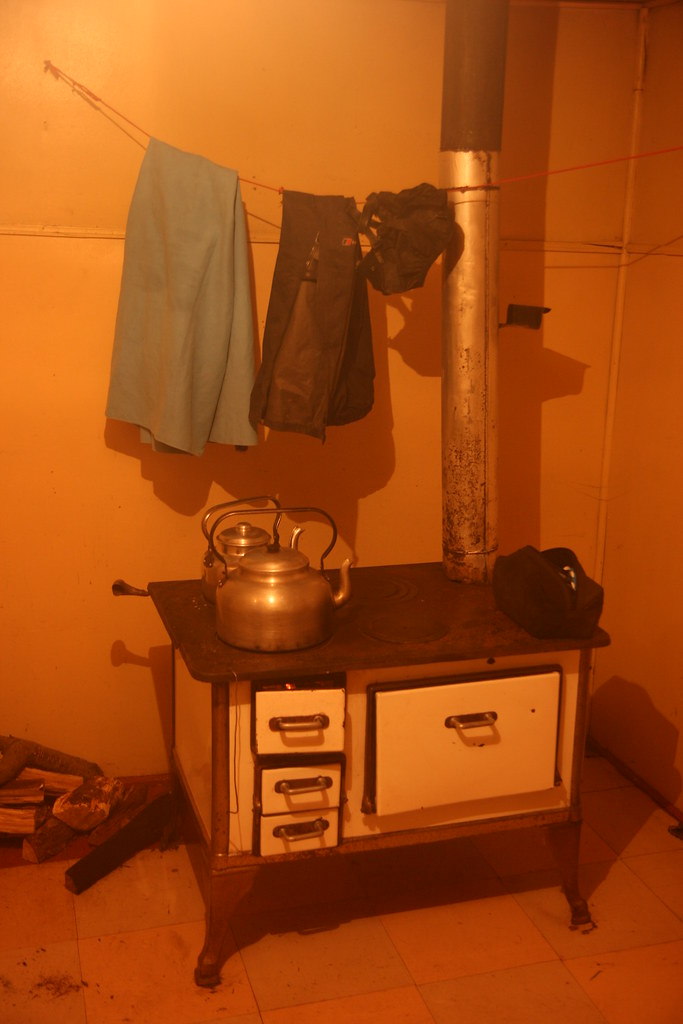
Soon I had got the kitchen warmed up and my wet clothes dried, but the question was how to transfer that heat to the bedroom across the hall. Then in a Macgyver-esk stroke of genius it hit me - I boiled some water and used one of my water bags to improvise a hot water bottle. I woke up the following morning feeling refreshed and toasty warm. Marvellous.
Back on the rough road I soon noticed that the bike was handling oddly and not riding the bumps well at all. I pulled up to have a quick check and noticed two significant problems. First, a part of my notoriously rubbish Caribou luggage rack had completely disintegrated and fallen off the bike. Second, the bolt that supports my rear suspension spring had nearly dropped out - rendering the rear shock almost completely useless. Both problems were beyond my roadside repair skills, so I cautiously climbed back on the bike and rode as gently as I could along the sixty mile stretch to the nearest town - Coyhaique. Riding at 20mph was painful, not just because I´m impatient, but because I couldn´t get to enjoy this spectacular stretch of hairpins on the way.
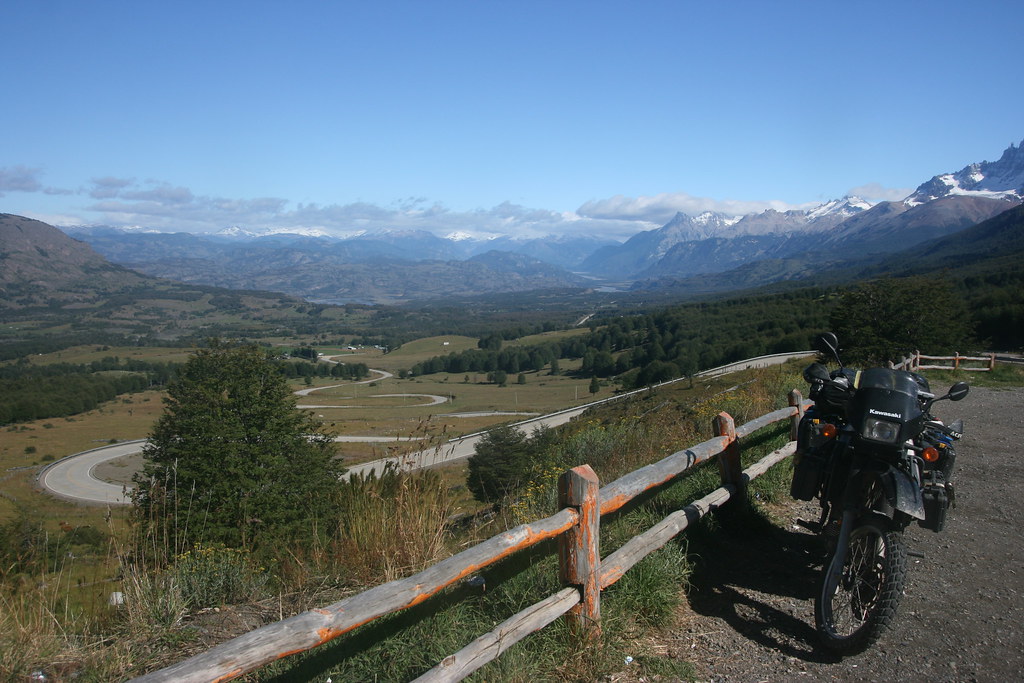
Eventually though I made it to Coyhaique and managed to organise the local bike mechanic to help me out with repairs.
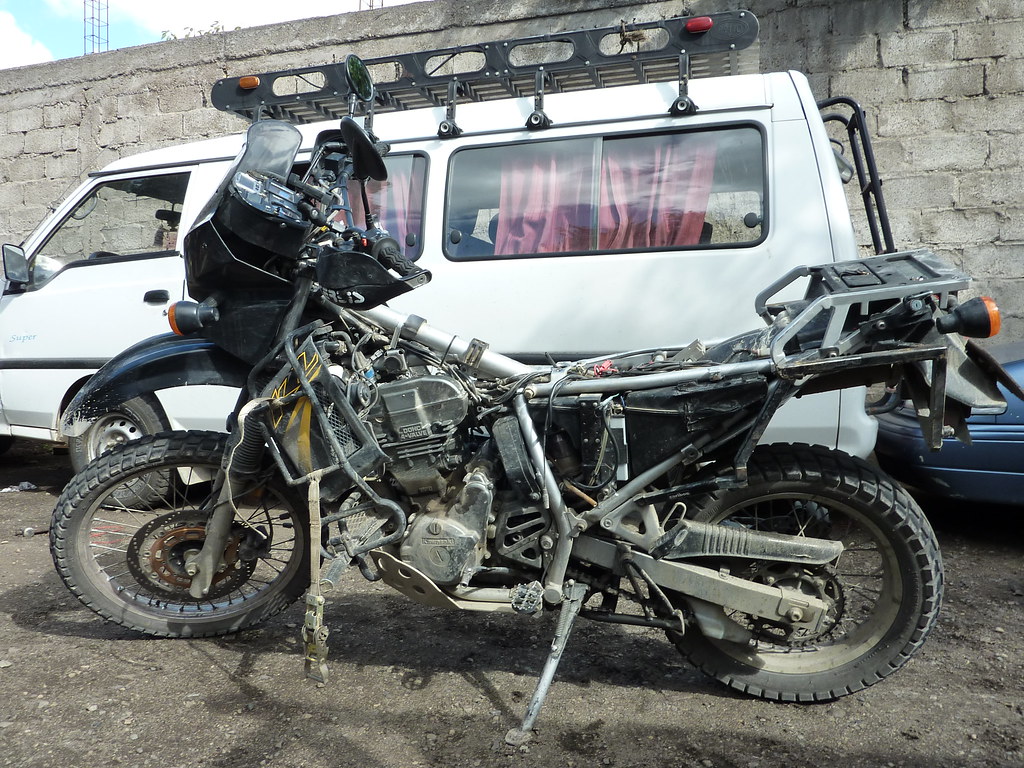
By the following morning the suspension was repaired, Juan the mechanic had constructed an entirely new part for my luggage rack, and I even had a chance to change the oil and clean the filter. The Phoenix was back in full working order and I spent the following day traversing glorious volcanic scenery with mountains and lakes galore.
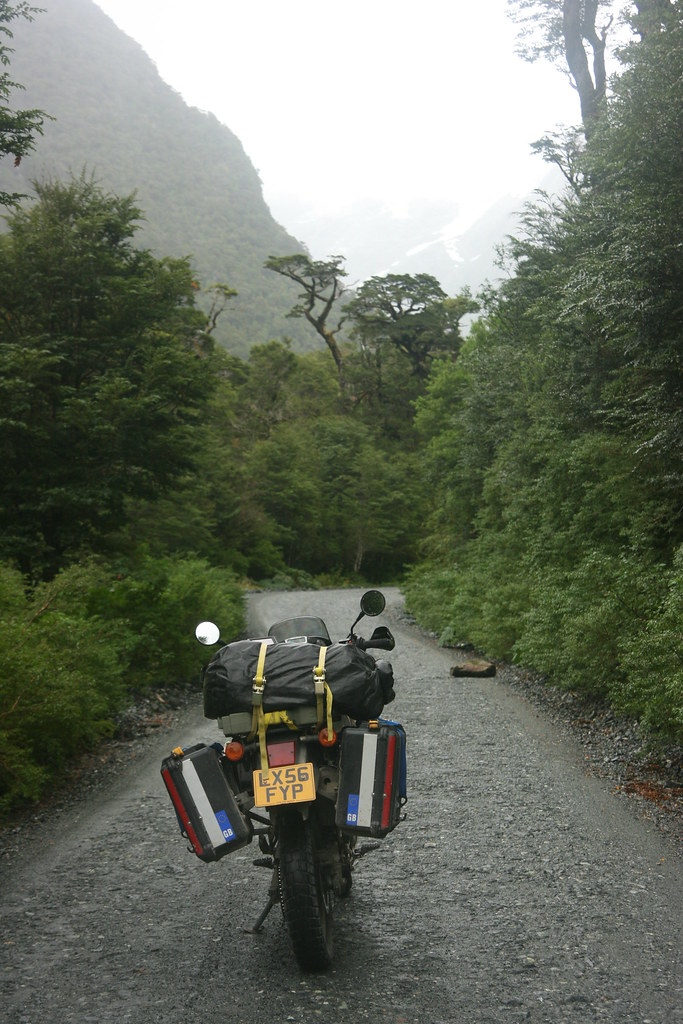
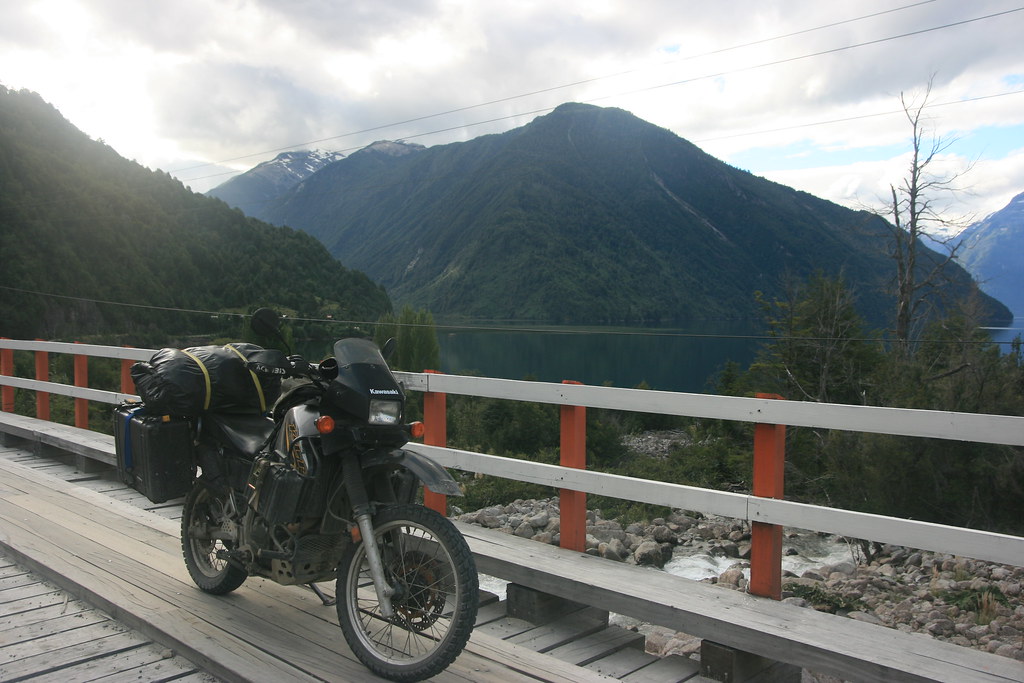

Since crossing the border back into Argentina I´ve been motoring north on good roads. The weather has improved considerably and for the first time in almost a fortnight it has been warm enough to take off my thermal layers. Needless to say, since leaving Ushuaia the adventure has really begun. And with Bolivia only a week away, it should continue.
